This Homemade Ketchup has a tangy, lightly sweetened, and rich tomato flavor that tastes so much better than store-bought ketchup. It’s easy to make, customizable, and better for you, too! Start making your own pantry staples today with this beginner-friendly condiment recipe.
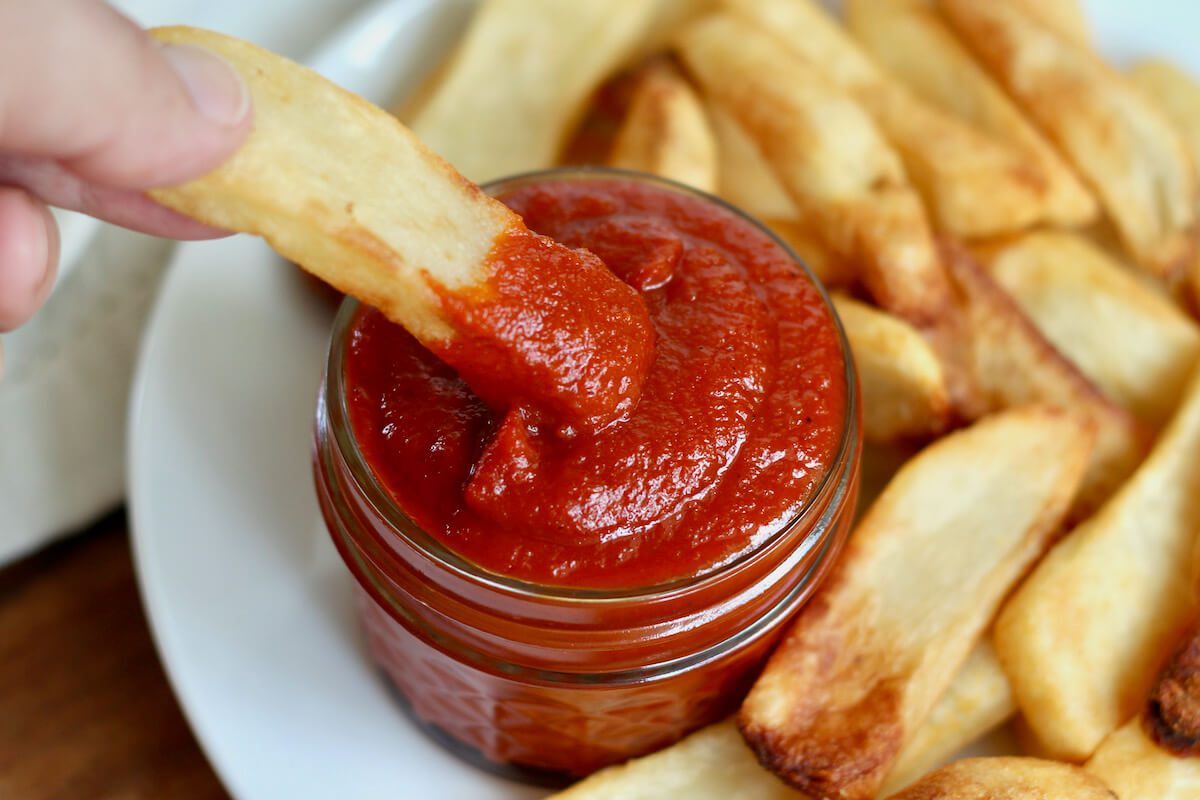
I find it so satisfying to make pantry staples, like ketchup, from scratch.
In a world where buying condiments is the norm, it surprises many to discover how quick, easy, and delicious homemade condiments can be.
This homemade ketchup recipe is slow-simmered on the stovetop and uses both crushed tomatoes and tomato paste. It has a rich, vibrant tomato flavor with the perfect balance of sweetness and tanginess.
Today, I’m walking you through how to make the best homemade ketchup, including which ingredients to use, tips that will guarantee it turns out right the first time, and some of my favorite ways to use this healthy ketchup recipe.
Disclaimer: Some links throughout this post are affiliate links. As an Amazon Associate, I earn from qualifying purchases. You can learn more by visiting my Affiliate Disclosure Page.
Why You'll Love This Recipe
- Flavorful- Tangy, lightly sweetened, and rich with tomato flavor, this homemade ketchup tastes so much better than store-bought.
- Beginner-Friendly- Interested in making homemade kitchen staples? Start with ketchup! It's easy, using basic ingredients and simple cooking methods.
- Customizable- Adjust the sugar, vinegar, salt, and spices to make your homemade ketchup taste exactly how you like it.
- Better Ingredients- Most store-bought ketchup is made with processed ingredients like high fructose corn syrup. Making ketchup at home allows you to have better control over what you're eating.
- Fun Activity for Kids- If your kids love ketchup, making homemade ketchup can be a fun way to get them involved in the kitchen. Plus, it's a great learning experience to teach them about where our food comes from.
- Great for Gifting- Because ketchup has a long shelf life, it makes a perfect edible gift for loved ones.
Ingredient Notes
Here are some notes on key ingredients. For a full list of ingredients, check out the recipe card below.
- Crushed Tomatoes- Cooking down crushed tomatoes gives the ketchup a fresher, more vibrant flavor and better consistency compared to ketchup made with just tomato paste.
- Tomato Paste- Adds a rich, intense tomato flavor to the ketchup. Cooking the tomato paste in oil brings out its natural sweetness.
- Brown Sugar- Sweetens the ketchup, adding notes of caramel that pair well with the warm spices.
- Apple Cider Vinegar- Provides a tangy, fruity acidity that balances the sweetness of the ketchup.
- Sweet Onion- Adds a mild, sweet onion flavor to the ketchup. Using fresh onion instead of onion powder gives the ketchup more depth of flavor.
- Garlic- Freshly minced garlic adds a savory, aromatic flavor.
- Olive Oil- Cooking the onion, garlic, and tomato paste in olive oil intensifies their flavor.
- Kosher Salt- Balances and enhances the other flavors. Kosher salt is preferred because it doesn't contain anti-caking agents and added sugar like table salt often does.
- Spices- A blend of mustard powder, cloves, and allspice gives the ketchup a warm, complex flavor profile.
🌱 Sustainability Tip: Store leftover tomato paste in the freezer to prevent food waste. Use it in other recipes, like these homemade baked beans or this apricot BBQ sauce.
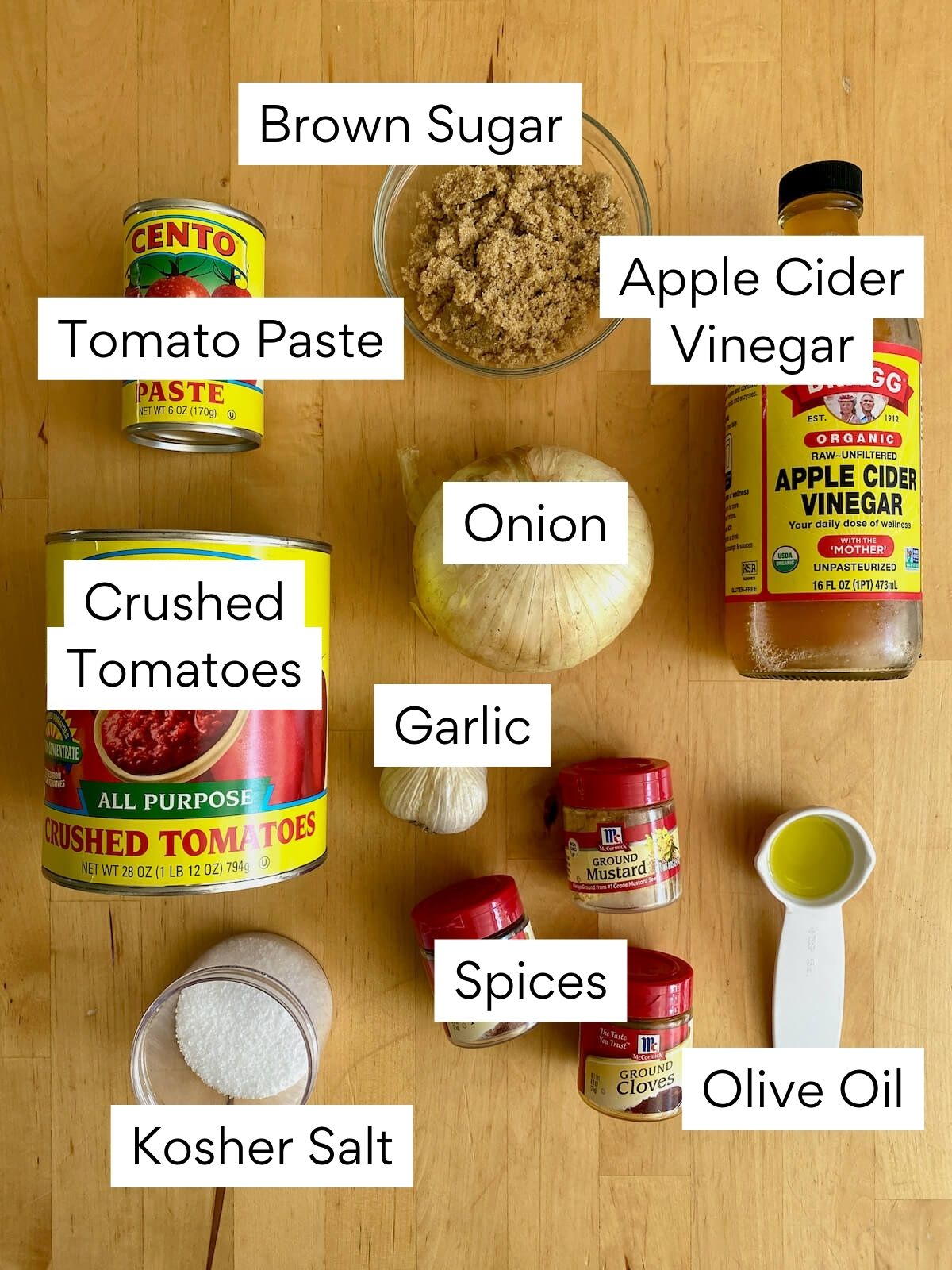
Substitutions and Variations
Here are a few ways you can try customizing this easy ketchup recipe to fit your diet and taste preferences.
Substitutions
- Crushed Tomatoes- Swap crushed tomatoes for tomato sauce, diced tomatoes, whole tomatoes, or fresh tomatoes if preferred.
- Tomato Paste- Use thickened tomato sauce in place of tomato paste or omit the tomato paste entirely.
- Brown Sugar- Substitute brown sugar with granulated sugar, honey, or maple syrup to give the ketchup a slightly different flavor.
- Apple Cider Vinegar- Use distilled white vinegar, red wine vinegar, or rice vinegar in place of apple cider vinegar.
- Sweet Onion- Swap sweet onion for yellow onion or shallots. Alternatively, use one tablespoon of onion powder in place of fresh onion.
- Garlic- Replace fresh garlic with ½ teaspoon of garlic powder.
- Olive Oil- Use any neutral-flavored cooking oil you prefer. Try canola oil, avocado oil, or vegetable oil.
- Kosher Salt- Substitute kosher salt with coarse sea salt or pink Himalayan salt. If using table salt, start with half the amount and adjust to taste.
- Ground Mustard- Swap ground mustard for ½ tablespoon of dijon mustard.
- Allspice & Cloves- Use a pinch of cinnamon and a pinch of nutmeg in place of allspice and cloves.

Variations
- Chipotle- Blend a chipotle pepper in adobo sauce into the ketchup for a smoky, spicy flavor profile.
- Spicy- Add cayenne pepper, red pepper flakes, hot sauce, or chipotle peppers to the ketchup for a spicy kick.
- Curry- Swap the allspice and cloves for a blend of curry spices like curry powder, turmeric, ginger, garam masala, and coriander.
- Maple Cinnamon- Swap out the brown sugar for maple syrup and add more warming spices like cinnamon and nutmeg for a cozy twist.
Equipment Notes
Here are some notes on any special equipment I used to make this recipe.
- Immersion Blender- An immersion blender is perfect for blending right in the pot. It saves time, keeps things tidy, and lets you control how smooth your mixture turns out. Plus, it's easy to clean!
- Splatter Screen- Using a splatter screen helps keep your stovetop clean while making ketchup by preventing hot splashes from escaping the pot.
How to Make Homemade Ketchup
Here is how to make ketchup from scratch.
Step 1: Sauté the aromatics. Heat 2 tablespoons of olive oil in a large saucepan over medium heat. Add the diced sweet onion and sauté for 5-7 minutes until softened. Then, add the minced garlic and cook for an additional 30 seconds.
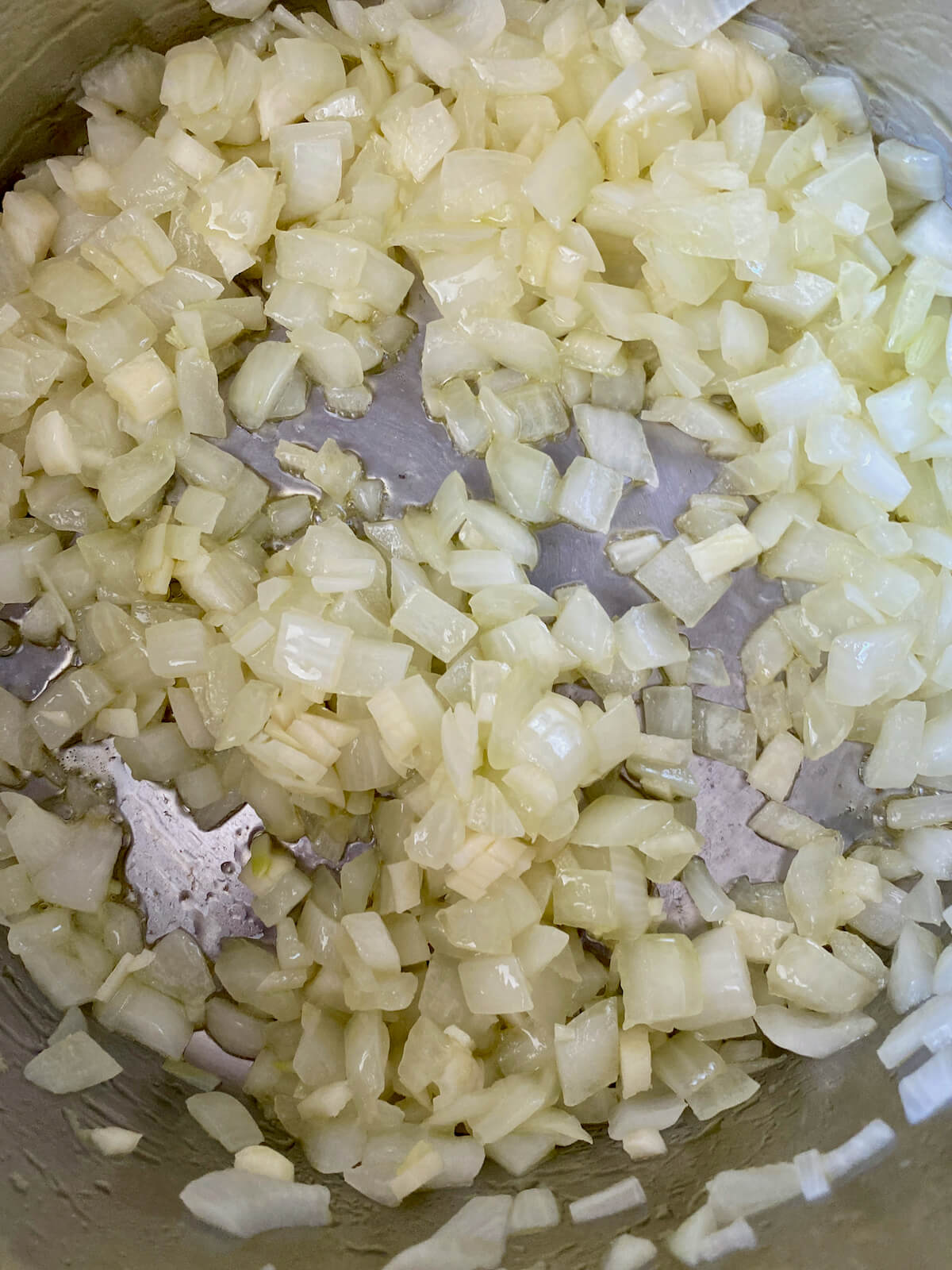
Step 2: Add tomato paste. Stir in 2 tablespoons of tomato paste and cook for 1-2 minutes to intensify its flavor.

Step 3: Add remaining ingredients. Reduce heat to low. Pour in the crushed tomatoes, making sure to scrape the bottom of the pan to release any cooked-on bits. Add brown sugar, apple cider vinegar, and spices. Mix until well combined.
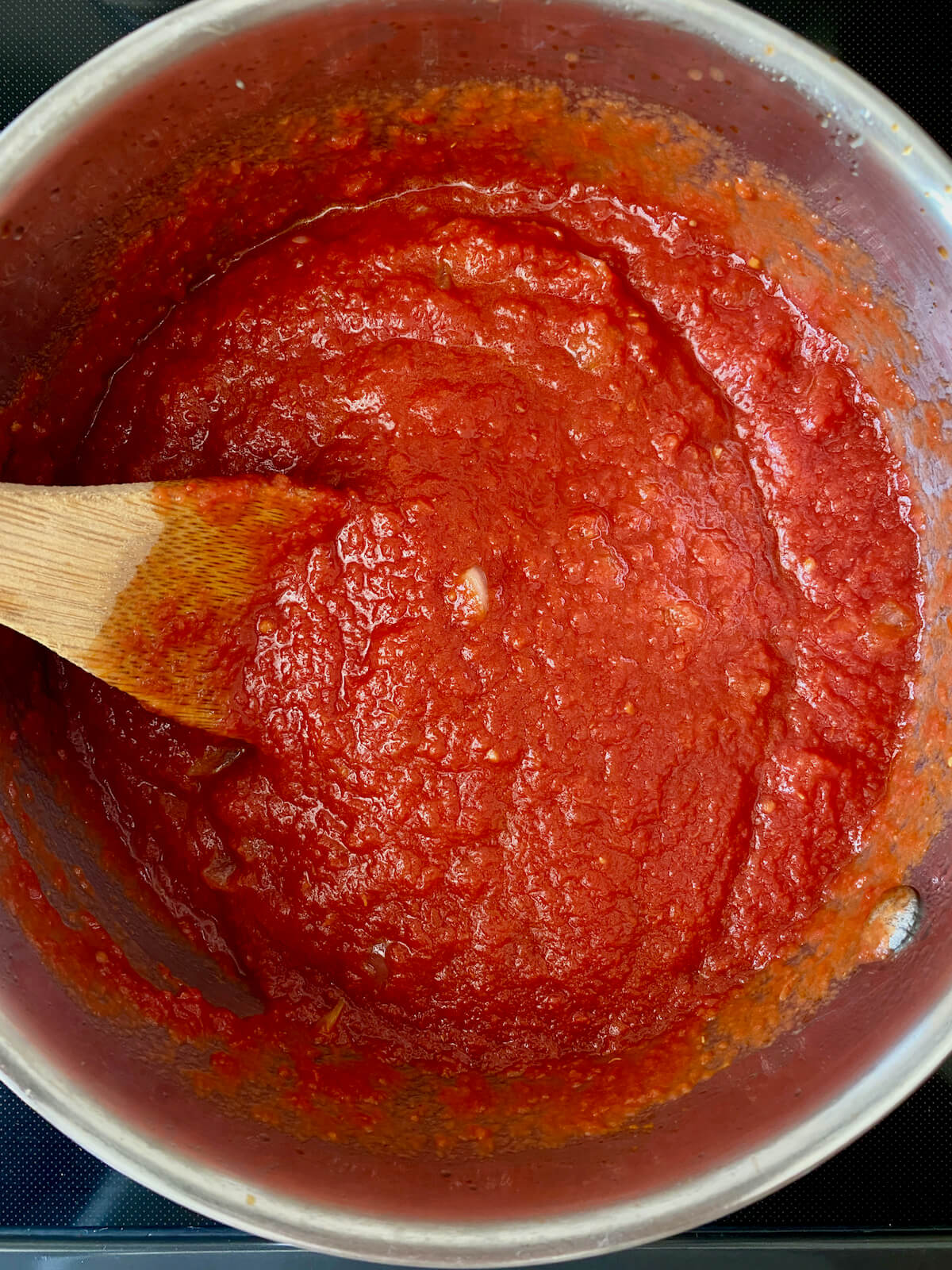

Step 4: Puree the ketchup. Using an immersion blender directly in the saucepan, puree the mixture until smooth. Alternatively, transfer the mixture to a blender and carefully puree in batches.
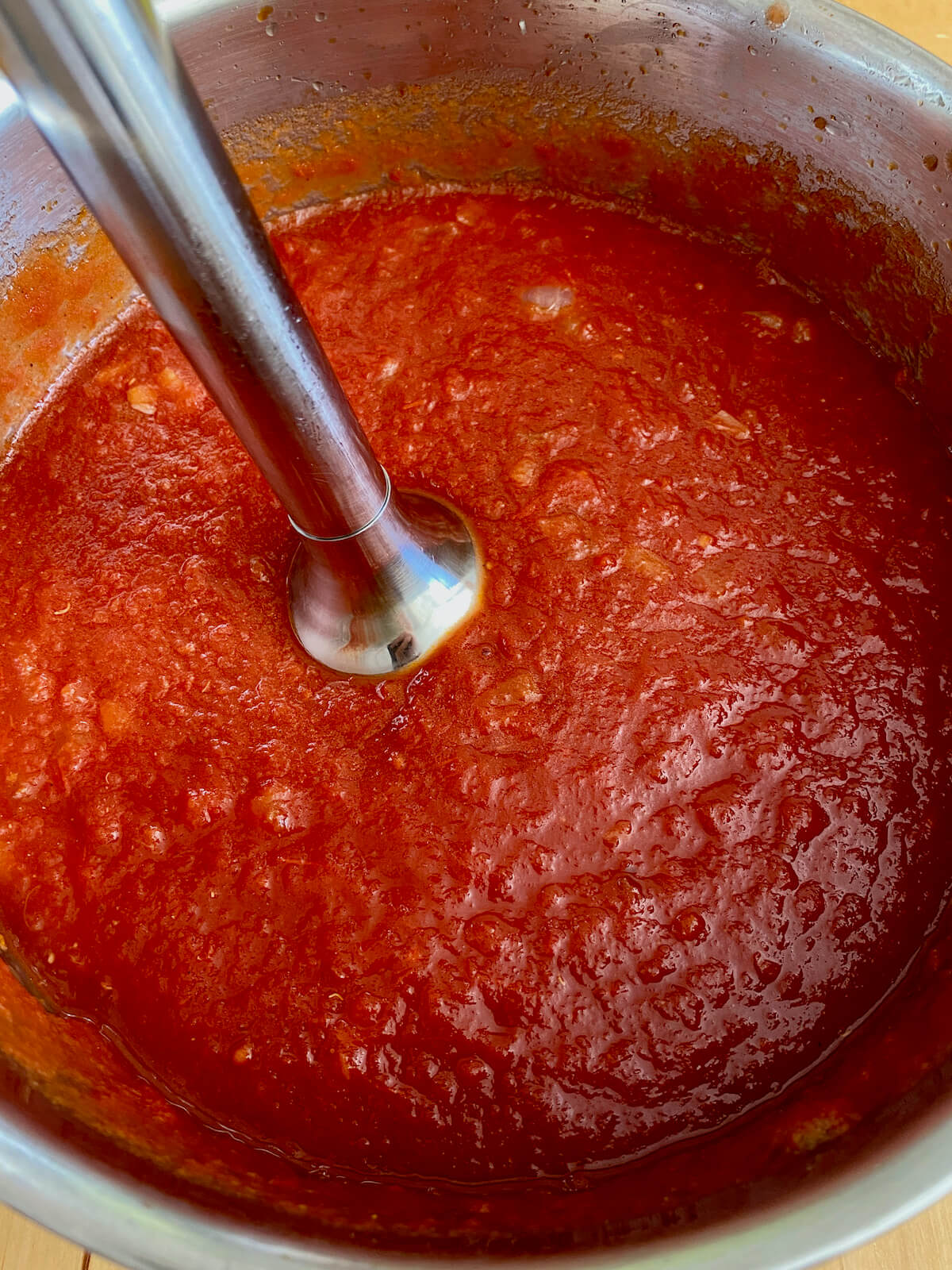
Step 5: Simmer the ketchup. Bring the mixture to a gentle simmer. Let it simmer uncovered for 1 ½ to 2 hours, or until the ketchup reaches your desired consistency. Use a splatter screen if needed to minimize mess.
Step 6: Strain ketchup (optional). After simmering, let the ketchup cool slightly. Optionally, pass it through a fine mesh sieve to achieve an even smoother consistency.

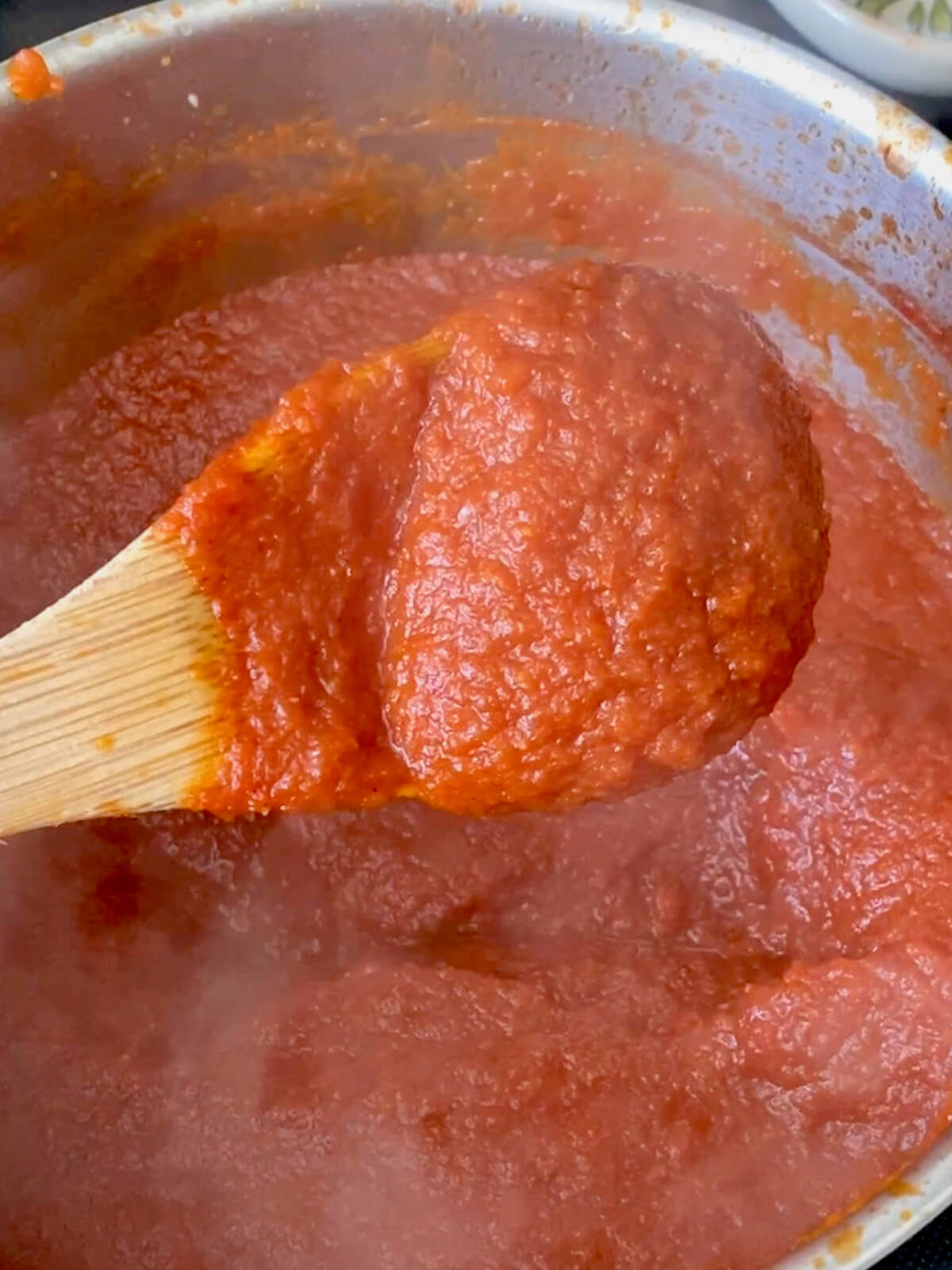
Step 6: Cool and serve. Transfer the ketchup to a glass jar or storage container and allow it to cool completely before serving. Enjoy!
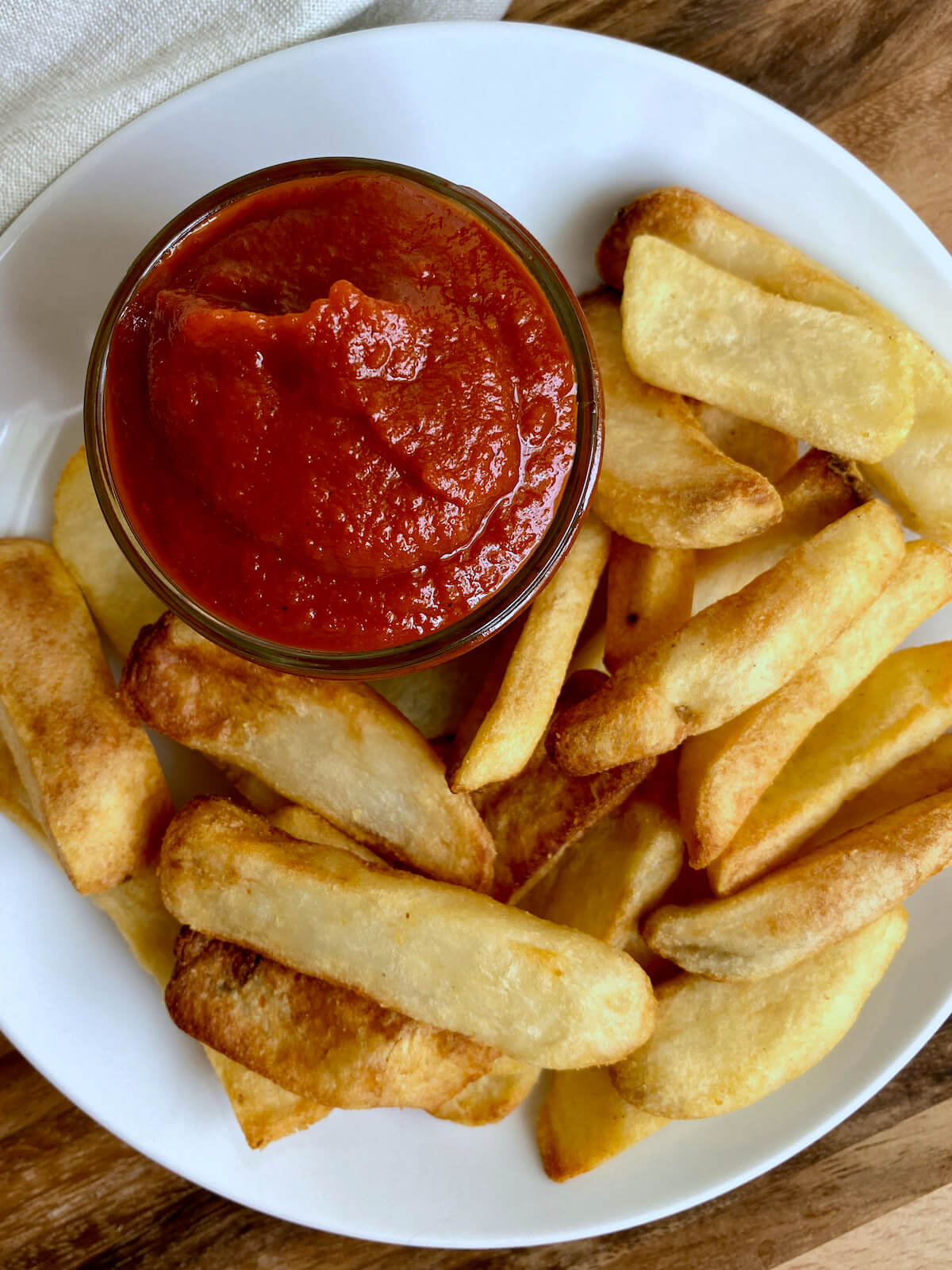
Tips for Success
Make this easy homemade ketchup successfully the first time using these helpful kitchen tips.
- Choose high-quality ingredients. Use fresh onions and garlic and high-quality tomato products for the best flavor and texture.
- Blend well. Thoroughly blend the ketchup until smooth. An immersion blender works well for this, but a regular blender may also be used.
- Season to taste. Once the ketchup has finished simmering, taste for seasoning and add more sugar, vinegar, salt, or spices to suit your tastes.
- Cool before serving. The flavor of the ketchup develops as it cools. Allow the ketchup to cool before serving for the best flavor.
- Label and date. Ketchup will last at least one month in the refrigerator. Be sure to label and date it to keep track of freshness.
💡 Quick Tip: Ketchup not as smooth as you'd like? Use a fine mesh sieve to strain out any remaining texture for a perfectly silky finish.
What To Serve With Homemade Ketchup
Ketchup is a versatile condiment that can be served alongside a variety of popular dishes.
From burgers to breakfast sandwiches, ketchup adds a sweet and tangy flavor to all of your favorite sandwiches. Try this homemade ketchup with a turkey smash burger, BBQ bacon burger, turkey and egg sandwich, or BLT bagel sandwich.
This sweet tomato condiment also pairs well with many side dishes and appetizers. French fries, sweet potato fries, tater tots, roasted potato wedges, onion rings, butternut squash fries, mozzarella sticks, and cheesy broccoli bites all taste delicious dipped in ketchup.
Finally, egg dishes pair well with ketchup. From scrambled eggs and hard boiled eggs to quiches and frittatas, ketchup adds a tangy kick that compliments the richness of eggs.

How to Use Homemade Ketchup
Not only does ketchup make a delicious dip, but it also can be used in other recipes to add flavor and sweetness. Here are some creative ways to use your homemade ketchup:
- BBQ Sauce
- Meat Marinades and Glazes
- Cocktail Sauce
- Fry Sauce or "Mayochup"
- Baked Beans
- Meatloaf
- Sloppy Joes
- Glazed Meatballs
- Chipotle Chicken Tacos
How to Store
- Refrigerator- Store homemade ketchup in a sealed glass jar or airtight container in the refrigerator for up to one month.
- Freezer- Freeze ketchup in a freezer-safe plastic bag or storage container for up to 6 months.
Canning Homemade Ketchup
Homemade ketchup can safely be preserved using the water bath canning method because of the acidity of the vinegar and tomatoes.
If you want to can this homemade ketchup recipe, follow these steps:
- Fill the jars. After you prepare your homemade ketchup, carefully ladle it into sterilized jars while it's still hot. Leave about ½ inch of headspace to allow for expansion.
- Screw on the lids. Stir to remove air bubbles and wipe the jar rims clean with a clean, damp towel. Place the sterilized lids onto the jars and screw on the bands until they are just snug, but not overly tight.
- Place in water bath. Using a jar lifter, carefully lower the filled jars into a simmering water bath. Ensure the jars are fully submerged with at least 1-2 inches of water above the lids.
- Process the jars. Process the jars ina boiling water bath for about 15 minutes.
- Allow the jars to cool. Using the jar lifter, carefully lift the jars out of the water and place them on a clean towel or cooling rack. Allow them to cool undisturbed for 12-24 hours.
- Check for proper sealing. After cooling, press down on the center of each lid. If it doesn't flex and makes a popping sound, the jar is sealed properly.
- Label and store. Label the sealed jars with the date and store them in a cool, dark place. Store properly sealed jars for up to a year.
Always follow proper canning guidelines when canning ketchup. And if you have any doubts about the safety of a jar, it's best to refrigerate and consume it promptly.
This recipe yields approximately one pint-sized jar (plus a little extra).
Make Ahead
Homemade ketchup can easily be made ahead of time. In fact, it tastes better once the flavors have had time to meld together for a day or two.
Store ketchup in the refrigerator for up to one month or in the freezer for up to 6 months. Homemade ketchup's long shelf life is perfect for beginners just getting started with making homemade pantry staples.
🎁 Edible Gift Idea: A small jar of homemade ketchup makes a unique and thoughtful gift for holidays and birthdays.
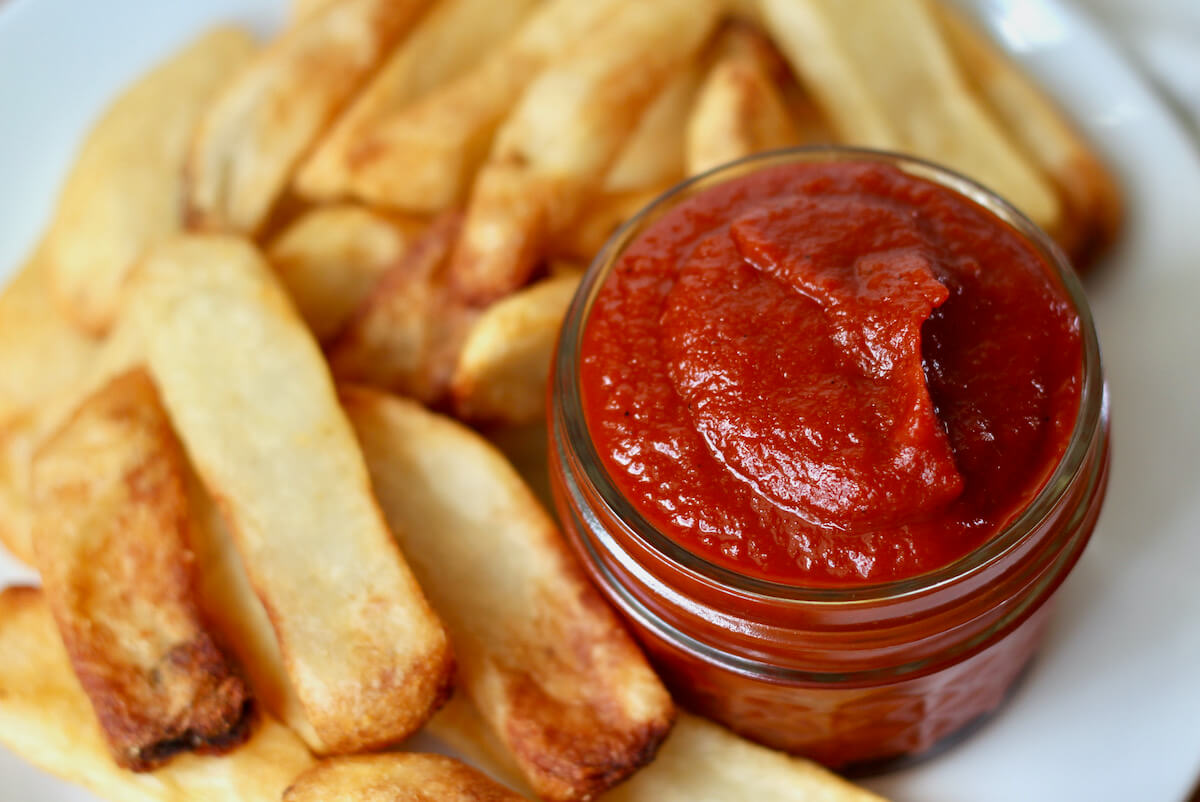
Frequently Asked Questions
Homemade ketchup tastes fresher, with a richer tomato flavor. You can also customize it to your liking. Plus, it's healthier since it doesn't have artificial ingredients or corn syrup like store-bought versions often do.
Yes, you can. However, you'll need to blanch, peel, and remove the seeds from fresh tomatoes before using them in the recipe.
To ensure safety and maximize shelf-life, always refrigerate homemade ketchup to prevent harmful bacterial growth.
Homemade tomato ketchup can be canned for long-term preservation. Check the "Canning Homemade Ketchup" section above for basic instructions and always consult reliable canning resources for detailed instructions and safety guidelines.
Yes, homemade ketchup can be made in a slow cooker. Simply combine the ingredients and cook uncovered on low for 6-8 hours, then blend to your desired consistency.
Let's Connect!
Be sure to leave a comment below if you have any questions. You can also connect with me on Instagram, Facebook, Pinterest, or via email at [email protected].
📖 Recipe
Homemade Ketchup
Equipment
- Splatter screen optional
Ingredients
- 2 tablespoons olive oil
- 1 medium sweet onion diced
- 3 cloves garlic minced
- 2 tablespoons tomato paste
- 1 28-ounce can crushed tomatoes
- ½ cup brown sugar packed
- ¼ cup apple cider vinegar
- 1 teaspoon kosher salt
- ½ teaspoon ground mustard
- ⅛ teaspoon ground cloves
- ⅛ teaspoon allspice
Instructions
- Heat 2 tablespoons of olive oil in a large saucepan over medium heat. Add diced sweet onion and sauté for 5-7 minutes until softened. Then, add the minced garlic and cook for an additional 30 seconds.2 tablespoons olive oil, 1 medium sweet onion, 3 cloves garlic
- Stir in 2 tablespoons of tomato paste and cook for 1-2 minutes to intensify its flavor.2 tablespoons tomato paste
- Reduce heat to low. Pour in the crushed tomatoes, making sure to scrape the bottom of the pan to release any cooked-on bits. Add brown sugar, apple cider vinegar, and spices. Mix until well combined.1 28-ounce can crushed tomatoes, ½ cup brown sugar, ¼ cup apple cider vinegar, 1 teaspoon kosher salt, ½ teaspoon ground mustard, ⅛ teaspoon ground cloves, ⅛ teaspoon allspice
- Using an immersion blender directly in the saucepan, puree the mixture until smooth. Alternatively, transfer the mixture to a blender and carefully puree in batches.
- Bring the mixture to a gentle simmer. Let it simmer uncovered for 1 ½ to 2 hours, or until the ketchup reaches your desired consistency. Use a splatter screen if needed to minimize mess.
- After simmering, let the ketchup cool slightly. Optionally, pass it through a fine mesh sieve to achieve an even smoother consistency.
- Transfer the ketchup to a glass jar or storage container and allow it to cool completely before serving. Enjoy!
Notes
- Quick Tip: Ketchup not as smooth as you'd like? Use a fine mesh sieve to strain out any remaining texture for a perfectly silky finish.
- Storage: Store ketchup in a glass jar or airtight container in the refrigerator for up to one month or in the freezer for up to 6 months.
- Make Ahead: Homemade ketchup actually tastes better after a day or two because the flavors have had time to melt together. So, it's perfect for making ahead!

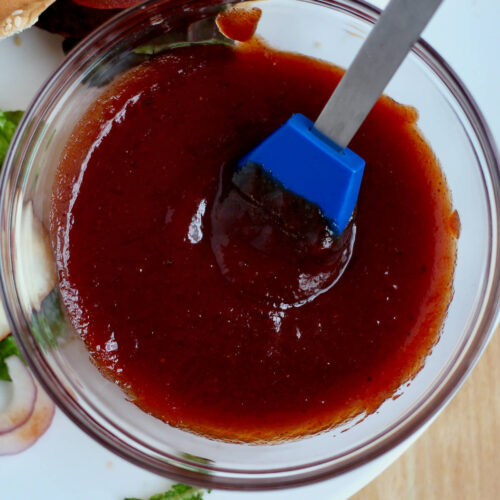





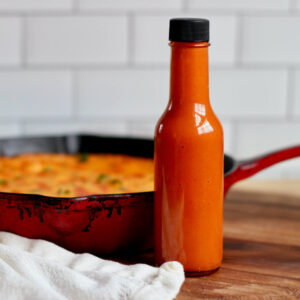


Comments
No Comments